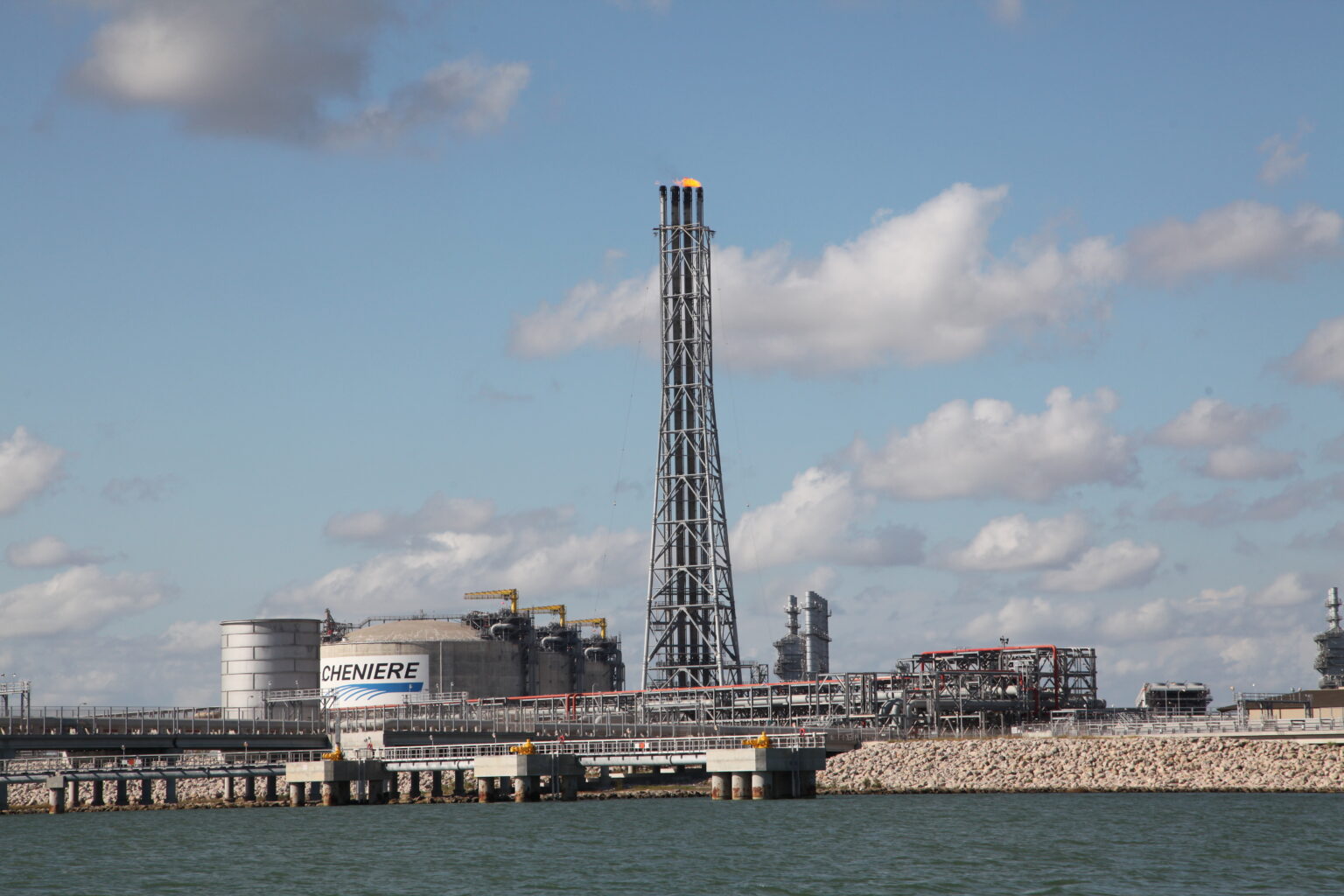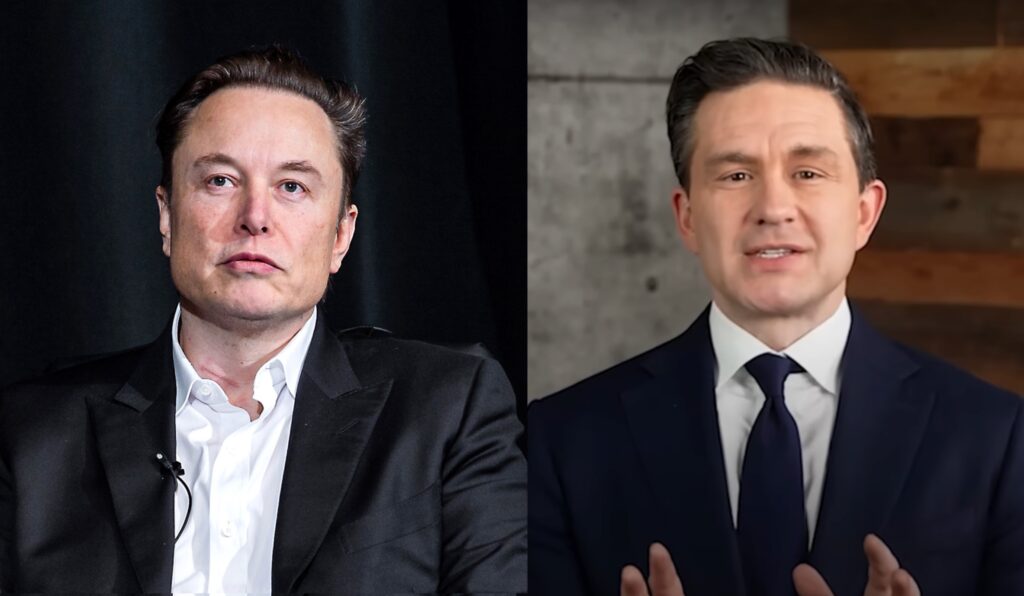Deutsche Bank and other German lenders have poured finance into gas export terminals on the U.S. Gulf Coast since Russia invaded Ukraine, a report has found, sparking anger among residents who say the megaprojects are devastating their communities.
German banks lent 2.17 billion euros to U.S. gas export projects since the beginning of 2022, a sharp increase on the 1.86 billion euros in loans made during the 10 preceding years combined, according to underlying data used to produce the report by environmental groups Urgewald, Environmental Action Germany (DUH) and Andy Gheorghiu Consulting. The banks also underwrote 610 million euros of bonds for the projects from 2012-2021, the data showed.
“I am here to sound the alarm alongside my German colleagues: This is destruction masked as economic development, and we will do everything we can to protect our homes and to stop it,” said Anne Rolfes, director of the Louisiana Bucket Brigade, a New Orleans nonprofit working with communities affected by the fossil fuel industry.
Rolfes was speaking during a visit last month to the German port of Wilhelmshaven, site of a new terminal to unload liquefied natural gas (LNG) — natural gas supercooled for shipping on specialized tankers. The terminal received Germany’s first LNG cargo to be imported directly from the U.S. Gulf Coast on January 3.
“German banks like Deutsche Bank are funding this export of gas from the United States,” Rolfes told DeSmog. “As they fund this export, they also fund the destruction of coastal communities on both sides of the Atlantic.”
A Deutsche Bank spokesman said the company “applies an enhanced environmental and social due diligence for transactions in the oil and gas sector, including LNG.”
The report also highlights the role of German public banks in financing the U.S. LNG export boom — raising questions about a commitment Germany made to phase out international public finance for fossil fuel projects at the COP26 climate talks in Glasgow in 2021.
Landesbank Baden-Württemberg (LBBW) and Helaba, which represent various states in Germany, lent 1.3 billion euros and 230 million euros respectively to U.S. LNG projects in the past decade. IPEX-Bank, the international arm of the state-owned German development bank KfW and DZ Bank, Germany’s second largest private bank, have both helped finance new terminals and expansion projects in the past year, the report found.
DZ Bank said via a spokesperson that it did not finance oil and gas production “by means of fracking or from oil shale and oil sands”, and added that it was an “important financing partner for the energy transition in Germany and a contributor to net zero emissions.”
The other German banks mentioned in this story did not respond to requests for comment.
‘Climate Disaster’
In the months following the invasion of Ukraine on February 24, 2022, German energy companies signed a series of deals with U.S. LNG exporters as Europe’s largest economy raced to break its decades-old dependence on Russian pipeline gas.
The scramble by German, French and other European buyers helped inject new momentum into long-standing plans to build a series of heavily-polluting new LNG export terminals and expansion projects from Texas to Pennsylvania, prompting outcry among residents.
Opponents of the projects cite impacts including toxic air pollution; light pollution; flaring; destruction of unique wetland habitats; and shoreline erosion compounded by channel dredging to make way for giant LNG tankers — as well as the climate harm of associated emissions.
The German government has championed LNG as a ‘bridging fuel,’ saying its stopgap use is consistent with the country’s target to reach net zero greenhouse gas emissions by 2045. But leakage of methane — a powerful climate pollutant — during operations to frack, transport and store the gas means that importing LNG can generate up to 10 times the carbon emissions as an equivalent quantity of pipeline gas, according to analysis by Norwegian research company Rystad Energy.
With project lifetimes stretching into the 2040s or beyond, campaigners fear the new LNG infrastructure will lock Europe into dependence on fossil fuels for decades.
“This is a climate disaster,” said Constantin Zerger of Environmental Action Germany. “German companies are not only shopping for gas worldwide, they are also directly funding export projects.”
Campaigners hope greater scrutiny of German banks may prompt the lenders to follow the example of French bank Société Générale, a major financier of U.S. LNG projects, which said last month that it had pulled its support for Rio Grande LNG, a planned export terminal in south Texas.
In 2017, French Bank BNP Paribas pledged to stop granting dedicated financial support for fracked gas pipelines and export terminals in North America in the wake of pressure from Indigenous leaders, who gained widespread media coverage during a visit to Paris.
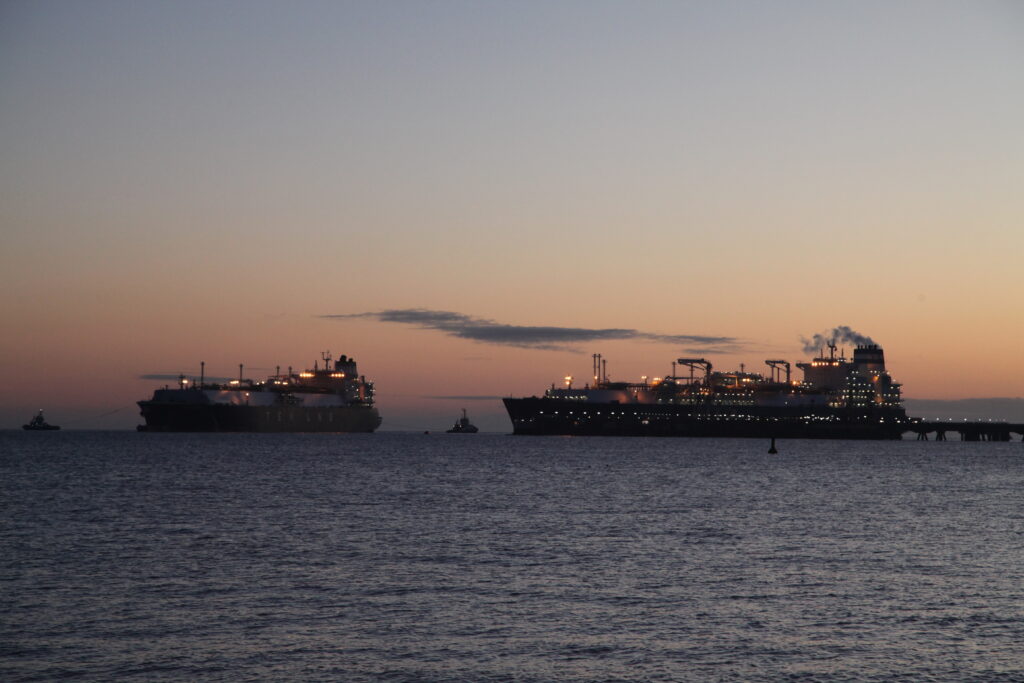
two-week trip from Louisiana, becoming the first U.S. LNG cargo to arrive in Germany. Credit: Edward Donnelly.
‘Monstrous Projects’
Japanese, Canadian, Dutch, French and U.S. banks have provided much of the financing for the construction of U.S. LNG export terminals over the past decade, but Germany is emerging as an increasingly significant player.
The report found that German lenders have helped finance seven out of some 27 planned or existing U.S. LNG terminals: The Sabine Pass and Plaquemines LNG terminals in Louisiana; Cove Point LNG Terminal in Maryland; Elba Island LNG in Georgia; and the Corpus Christi LNG Terminal, and Freeport LNG Terminal, both in Texas.
Campaigners say the planned $21 billion Plaquemines LNG Terminal, a 630-acre site on the Mississippi River, part financed by German banks, is emblematic of the risks such projects pose.
Deutsche Bank lent around 910 million euros for the Plaquemines project — the majority of the 1.72 billion euros it has loaned to U.S. LNG projects since 2012, the report found. State-owned Landesbank Baden-Württemberg followed closely with 820 million euros in financing for the new terminal. Bank of America, Bank of China, JP Morgan Chase and other German banks also backed the project, developed by Virginia-based Venture Global.
The Louisiana Bucket Brigade, Sierra Club and other environmental groups have been demanding more scrutiny of permitting for the facility, which could have disproportionate impacts on people of color, who make up 73 percent of the population living within three miles of the site in southeast Louisiana, south of New Orleans, according to data from Oil and Gas Watch, a public interest investigative journalism platform. Experts have warned of the potentially lethal consequences of a climate-fuelled hurricane hitting the terminal and leaking methane into nearby homes and wetlands.
“Roughly 20 new or expanded LNG terminals are slated to come online within the next decade, and will be located almost entirely in communities of color,” Louisiana community leader Roishetta Ozane told a roundtable in Washington, D.C. on March 29. “Yet as communities of color are literally fighting for their lives on the front lines, departments and agencies…are continuously approving permits for these deadly, monstrous projects.’’
Despite such opposition, the Plaquemines LNG project has emerged as a pillar of Germany’s plans to wean itself off Russian gas. In June, German utility EnBW signed a deal with Venture Global to import 1.5 million tonnes per year of LNG for 20 years from the planned terminal and another terminal Venture Global plans to build in Louisiana’s Cameron Parish, known as CP2. In October, the agreement was increased to two million tonnes per year.
German power companies RWE and Uniper have also struck U.S. LNG deals in the past year. The German government additionally backed a 2.8 billion euro syndicated loan to enable Swiss-based commodities trader Trafigura to import LNG into the European gas grid, including for Germany.
Wetlands Sacrificed
Reports of disruption to local communities caused by the existing Venture Global Calcasieu Pass LNG export terminal in Cameron Parish in southwest Louisiana, in operation since early 2022, have fuelled concerns over the company’s expansion plans. The facility is one of three terminals in the region that export approximately half of U.S. LNG cargoes by volume, with at least five additional plants planned in the area in the coming decade.
“The LNG export business has come to Cameron Parish and it’s basically shut down all the recreational activities for the local people here,” said John Allaire, a retired oil and gas industry environmental engineer who lives next to the Calcasieu Pass facility. “The boat launches are closed, the jetty park is closed, the fishing areas are all closed where the public used to be able to go in and fish,” he said in an October 2022 interview.
Allaire added that “we’re sacrificing hundreds and hundreds of acres of wetlands and cheniers” (a rare landform found in coastal Louisiana). U.S. federal regulator documents reviewed by Oil and Gas Watch show that LNG export projects across the U.S. threaten more than 21,000 acres of wetlands, an area about 1.5 times the size of Manhattan.
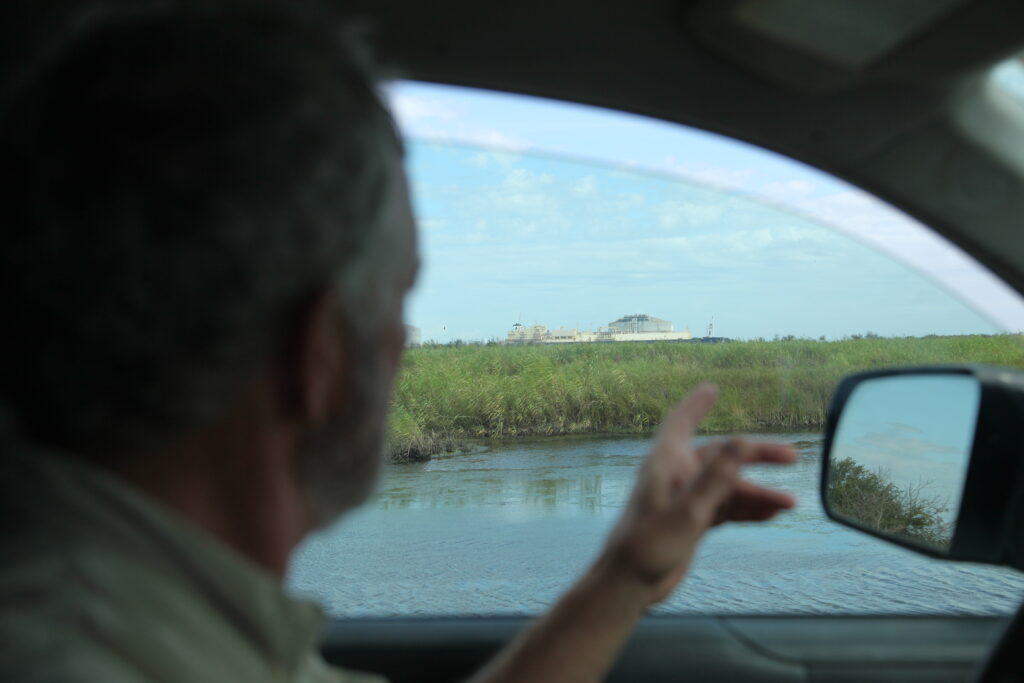
his coastal home in southwest Louisiana, October 24, 2022. Credit: Edward Donnelly.
Since January 2022, Allaire has documented what he describes as abnormal levels of flaring, which is normally intended as an emergency procedure, at the Venture Global facility. A report based on his findings published with the Louisiana Bucket Brigade concluded that “the Calcasieu Pass is violating state regulations.” Venture Global did not respond to a request for comment on the allegations of safety violations and negative impacts on the nearby community.
Calcasieu Pass supplied the first U.S. LNG cargo to arrive in Germany, which reached Wilhelmshaven on January 3 on a tanker named the Maria Energy. Desmog analysis of data from Marine Traffic shows 13 out of 15 LNG cargoes to arrive in Germany by mid-April have arrived from the U.S. terminals, with the remaining two carrying LNG from Angola and Trinidad and Tobago.
Giant Fireball
Texas export terminal Freeport LNG, which the report found was part financed by Deutsche Bank and German engineering company Siemens, has also begun sending supplies to Germany. On March 3, the LNG Rosenrot docked in Wilhelmshaven, the third LNG cargo to leave Freeport since a June 8, 2022 explosion at the plant forced an eight-month shutdown.
In a press release issued six days after the explosion, Freeport LNG stated: “At no time did the incident pose a threat to the surrounding community” and that a resulting fire had been “at all times contained within the fence line of the liquefaction facility.” However, research and advocacy group Global Witness produced a film alleging that the terminal operators and local authorities failed to provide reassurances to neighboring residents in the minutes after the blast, which unleashed a 100-meter fireball.
LNG cargoes have also arrived in Germany from the Sabine Pass export terminal in Louisiana, where Cheniere Energy, the largest U.S. LNG exporter, is planning “significant expansion” of the facility to meet rising demand.
In Corpus Christi, Texas, Cheniere’s plans to double the capacity of its LNG export plant have raised public health and emissions concerns among residents. Helaba (91 million euros), KfW IPEX-Bank (91 million euros) and German engineering company Siemens (45 million euros) were all identified as financiers of the latest Corpus Christi expansion, according to the underlying data used in the report, which was reviewed by DeSmog.
‘’It’s a terrible idea,” said Corpus Christi area resident Errol Summerlin, a former lawyer who co-founded CAPE, a collective of environmental groups, of the proposed expansion. “We already have folks that have asthma and other respiratory diseases and this is just going to exacerbate the public health consequences of this facility.” The U.S. federal government rejected a waiver request for looser pollution limits from Cheniere in September.
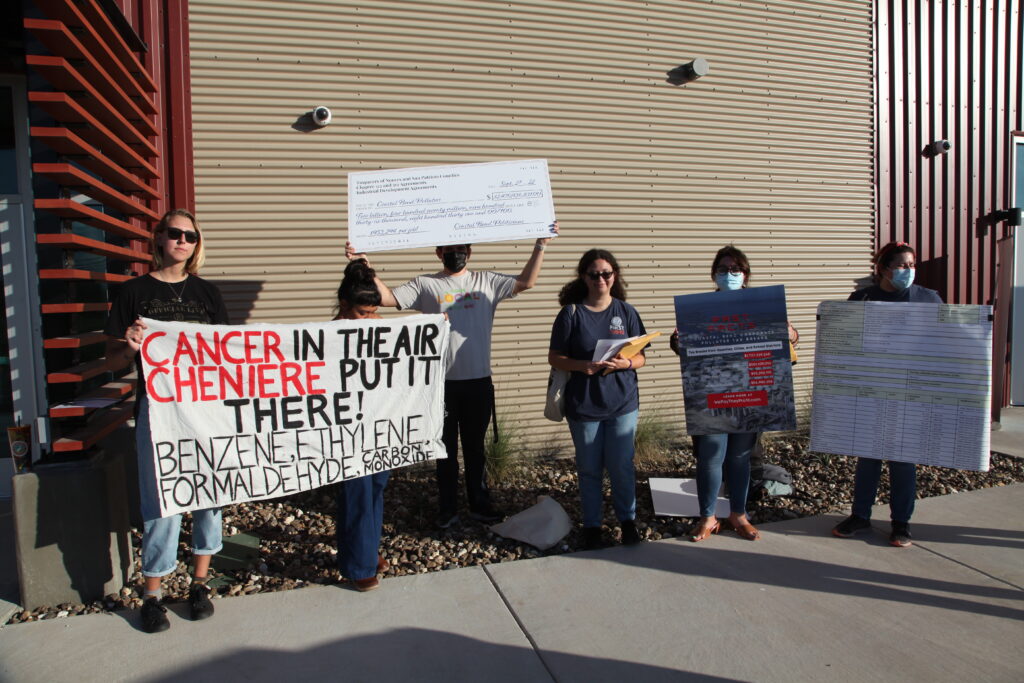
Stranded Assets
The rapid expansion of projects to export LNG from the Gulf Coast since the invasion of Ukraine has been mirrored by a rapid buildout of terminals to import the gas into Europe. The continent will more than double its existing import capacity if all the plans — worth a total of 22.1 billion euros — are carried out, according to a March report by nonprofit research group Global Energy Monitor.
Critics have warned that new LNG import projects undermine Europe’s long-term plans to reduce its reliance on natural gas to hit climate goals, and could leave the continent saddled with billions of euros in stranded assets. In 2022, the EU reduced gas consumption by 12 percent, and fully implementing 2030 climate targets would lower the bloc’s gas consumption by 30 percent according to the European Commission.
Germany’s economy and climate ministry acknowledged in December that state-sponsored LNG import projects totalling at least 9.7 billion euros could lead to “overcapacity” in coming years. RWE Chief Executive Markus Krebber echoed this opinion last month, even while pushing for a controversial LNG import megaproject off the coast of the isle of Rügen, a popular holiday destination on the Baltic Sea. Future cargoes could come from Port Arthur LNG, a new export terminal in Texas backed by a recent RWE supply contract.
Campaigners say Germany’s embrace of LNG calls its commitments in Glasgow to phase out public financing for fossil fuels by the end of 2022 into question.
German state-backed KfW IPEX-Bank has loaned 91 million euros to the Plaquemines LNG project, and a further 91 million euros to the Corpus Christi LNG expansion since the start of last year. And the German government is considering funding “at least ten large fossil fuel projects” worth approximately one billion euros, in Brazil, Cuba, the Dominican Republic, Iraq and Uzbekistan, according to a December 2022 report from advocacy group Oil Change International.
A spokesperson for the German economy and climate ministry said that Germany’s Glasgow commitments went into effect in January, and that KfW’s private LNG financing does not receive German state funding or guarantees. Robert Habeck, minister for economic affairs and climate action, generally sees no reason for further exploration of oil and gas fields, since this would jeopardize the goals of the 2015 Paris climate agreement, the spokesperson said.
Such assurances have failed to placate U.S. and German environmental groups, who fear Germany’s pivot to LNG could harm the climate for decades to come.
“It is clear that the German government and German companies are driving gas and LNG projects worldwide,” said Constantin Zerger, of Environmental Action Germany. “This is creating a global fossil lock-in, threatening climate targets both in Germany and globally.”
On May 22, DeSmog is co-hosting a special virtual event focused on the struggle against fossil fuel projects on the U.S. Gulf Coast in collaboration with the Pocket Project. To reserve a spot, click here.
Subscribe to our newsletter
Stay up to date with DeSmog news and alerts


